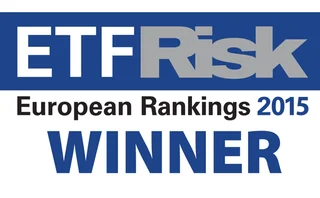
Asian insurers turn to equity ETFs for beta exposure
Insurers are exploring ETFs as a way of circumventing sector limits and increasing diversification. So far, the greatest demand is for equity exposure, but fixed-income ETFs are also starting to feature on insurers’ wish-lists. Justin Lee reports

Insurers operating in Asia are faced with unique challenges: low yields combined with a lack of investment grade long-dated fixed-income assets means they are often forced to look beyond traditional bonds and equities into other investment products such as mutual funds, structured products and exchange-traded funds (ETFs).
Recognising this challenge, the Indian insurance regulator, the Insurance Regulatory and Development Authority, has now allowed Indian insurers to invest in equity ETFs following the release of guidelines in March this year. However, certain restrictions apply. Currently, only equity ETFs registered with the Securities and Exchange Board of India are allowed to be used, effectively limiting insurers to domestic issuers. Eligible ETFs cannot invest more than 15% of the fund in a single company and not more than 30% in any one sector, the regulator has said.
At present, life insurers cannot invest more than 15% of their funds in a particular sector and also have to limit their exposure to a particular company to 10% of their funds. Therefore, ETFs are seen as a way to get around this ruling and allow more diversified exposure.
"Equity ETFs allow you to take exposure in a sector which you would not have been able to take because of sector limits and are the quickest and easiest way for an insurance company to take a diversified market exposure. They also help insurers to manage their industry level exposure limits and company level exposure limits," says AK Sridhar, chief investment officer of IndiaFirst Life Insurance in Mumbai.
The insurer has been investing in equity ETFs since May. "Many of us have started to take a token exposure to get familiarised with the operational process and liquidity of the ETFs but once insurers start feeling comfortable investing in ETFs you will see large amounts invested as we move forward," Sridhar says.
However, according to another chief investment officer at an Indian insurer, smaller or less established insurance companies may find this more useful. "For older and better-established players who already have in-house teams or dedicated fund managers it may not be very attractive. There are also challenges as insurers will have to keep monitoring ETFs to make sure they conform to the guidelines laid down by the insurance regulator," he says.
There is also interest among Indian insurers to invest in gold and other commodity-linked ETFs. However, investment in commodity and fixed-income ETFs is not currently allowed by the insurance regulator, says Sridhar.
"We believe that gold-linked ETFs are a good way to hedge against inflation instead of buying the underlying commodity. We would also be keen to invest in debt-based ETFs as well but unfortunately the domestic debt market is not liquid enough," he says.
Within other parts of Asia, the use of ETFs by insurers is at varying stages of uptake. While some insurers have been investing in ETFs for a number of years, others are yet to take the plunge. Overall, the use of ETFs by insurers is on the increase, say ETF product providers.
One provider that has seen a significant increase in EFT assets under management over the past 12 months is BlackRock. The asset manager added 12 new clients in 2013 that collectively purchased over $650 million of ETFs by the end of 2013, says Jane Leung, head of iShares Asia-Pacific, part of BlackRock.
"At their peak, our Asian clients have held as much as $6.3 billion in iShares ETFs. Most of these holdings were to gain exposures to single markets outside of the insurers' own domestic markets and they have remained in place. Our largest insurance market for ETFs in Asia is Japan though we have seen a pick-up throughout the rest of Asia ex-Japan. Some Korean insurers have also been large buyers," she says.
Jane Leung, iShares Asia-Pacific
The increase in interest by insurers is echoed by Kevin Anderson, head of investments, Asia-Pacific at State Street in Hong Kong.
"Over the past four years that we have been selling ETFs in Asia, we are seeing more and more insurance companies buying and holding ETFs. We have placed assets with several life insurance companies from Taiwan, Korea, Japan, Hong Kong and Singapore," he says.
Equity stake
Demand has primarily come in the form of equity ETFs, where insurance companies may lack specific expertise and where a smaller allocation of investment makes ETFs a convenient option.
"Large pension funds may internalise the management of equity and track beta indexes because their investment is quite large and over a long period. For insurance companies, the size of investment into equities may not justify internalising this. They also like products they can get in and out of quickly and change underlyings over time so in this sense there is a strong preference to benefit from the economies of scale of global ETF providers," says Marco Montanari, head of passive asset management for Deutsche Asset and Wealth Management in Hong Kong.
Gaining beta exposure to equity markets in specific countries is the main reason Zurich uses ETFs, says Matt Vincent, regional investment manager, Asia-Pacific and Middle East at Zurich Insurance in Hong Kong.
"We use ETFs in our Hong Kong, Indonesia, Japan, Singapore and Taiwan units and we started investing in ETFs two years ago. The size of our overall equity exposure is generally quite small in terms of total assets in Asia-Pacific so in that context it makes more sense to go down the route of ETFs rather than use unit funds or discrete mandates," he says.
According to Vincent, ETFs are a convenient tool that offers timely execution to implement an investment strategy.
"Once we have a strategic allocation we can use ETFs to tilt portfolios to where we might be running an overweight allocation to equities and within the space of one phone call you have market exposure. This can often take longer with an active manager," he says.
Charged up
The cost of capital to hold ETFs on an insurer's balance sheet is also a key consideration. Equity-based ETFs are treated the same as equities on the balance sheet and thus do not incur additional capital charges.
"Most risk-based capital solvency regimes effectively look at the underlying assets. An ETF is an index return so therefore should be treated at the nominated capital rate whereas bespoke discrete mandates that may be subject to tracking error due to active management style may be subject to higher capital charges," says Vincent.
In contrast, fixed-income ETFs tend to be treated on insurers' balance sheets as "available for sale" which disadvantages investors that prefer to buy and hold their bonds, say product providers.
"This means that held-to-maturity bonds do not have to be marked to market whereas bond ETFs must be marked to market. As a consequence, insurers typically start with utilising equity ETFs and once they are comfortable, may look to utilise fixed-income ETFs at a later point in time," says BlackRock's Leung.

Kevin Anderson, State Street
The use of fixed-income ETFs by Asian insurers is still a relatively new concept, says Montanari.
"Fixed-income ETFs have been widely used by European insurers but in Asia this is not the case. It is starting to gain momentum but unfortunately Asian insurance companies tend to buy fixed-income ETFs listed in the US. This is simply because of the high volume of ETFs on US exchanges but this may not be the best option because of the 30% tax on the dividends of US-listed ETFs," he says.
While equity investment through ETFs makes sense for insurers, they are less likely to use them for fixed-income allocations due to the overall allocation to fixed-income assets, says Vincent.
"There might not be that much demand for fixed-income ETFs as it depends on the overall allocation to fixed income and equity for insurance companies. An insurer might have an overall exposure of 5% to equities and upwards of 85% to fixed income. So it makes more sense to structure fixed-income investments into discrete style mandates or to outsource this to an external provider," he says.
However, in terms of fixed-income investments, one advantage of an ETF is the additional liquidity in comparison with the underlying bonds. This is particularly true for high yield where small positions in direct bonds cannot achieve the diversification an ETF can offer, says Leung.
"Insurers in Singapore, Hong Kong and Taiwan operate with lower domestic interest rates and so have used ETFs to achieve yield outside of their domestic markets. They use ETFs to invest in global equities as well, of course, but unlike Korean and Chinese insurers, they invest a large portion of their fixed-income assets globally as well and can therefore use the growing bond ETF product set to make their investments more efficient," she says.
With the prospect of rising US interest rates, the use of ETFs by insurers to hedge interest rate risk is also a trend that is starting to gain traction in the US and in Europe but has not yet taken off in Asia.
Leung says: "We have not yet seen Asian insurers using ETFs to hedge their portfolios as it is a trend that is nascent globally. However, we have advised a French life insurance client how to do this. The insurer uses one of our US Treasury ETFs to hedge US dollar and US rates, initially as a temporary measure that required less extensive due diligence than an actively managed option. However, after investigating active options, the insurer decided to maintain its holding in the ETF and remains a holder after 18 months."
Only users who have a paid subscription or are part of a corporate subscription are able to print or copy content.
To access these options, along with all other subscription benefits, please contact info@risk.net or view our subscription options here: http://subscriptions.risk.net/subscribe
You are currently unable to print this content. Please contact info@risk.net to find out more.
You are currently unable to copy this content. Please contact info@risk.net to find out more.
Copyright Infopro Digital Limited. All rights reserved.
As outlined in our terms and conditions, https://www.infopro-digital.com/terms-and-conditions/subscriptions/ (point 2.4), printing is limited to a single copy.
If you would like to purchase additional rights please email info@risk.net
Copyright Infopro Digital Limited. All rights reserved.
You may share this content using our article tools. As outlined in our terms and conditions, https://www.infopro-digital.com/terms-and-conditions/subscriptions/ (clause 2.4), an Authorised User may only make one copy of the materials for their own personal use. You must also comply with the restrictions in clause 2.5.
If you would like to purchase additional rights please email info@risk.net
More on Exchange-traded products
Realising the China opportunity
Webinar: HKEX
One size does not fit all: Smart beta explained
Sponsored feature: WisdomTree Europe
ETF Risk European Rankings 2015: ETF trading platform for institutional investors
Sponsored feature: Tradeweb
ETFs – Transforming the investment landscape in Asia
Sponsored survey analysis: Deutsche Asset & Wealth Management
Flood of oil ETF investors reshaping market, analysts say
'Massive' inflows cushioned oil price drop in early 2015, but could easily reverse
Currency-hedged ETF surge prompts hedging concerns
Eurozone QE programme prompts wave of investor interest
Currency-hedged ETF inflows boom
Investor interest sparks race to construct new products
Shanghai ETF option volatility spikes on China market fears
A crackdown on margin financing strengthens bearish sentiment








